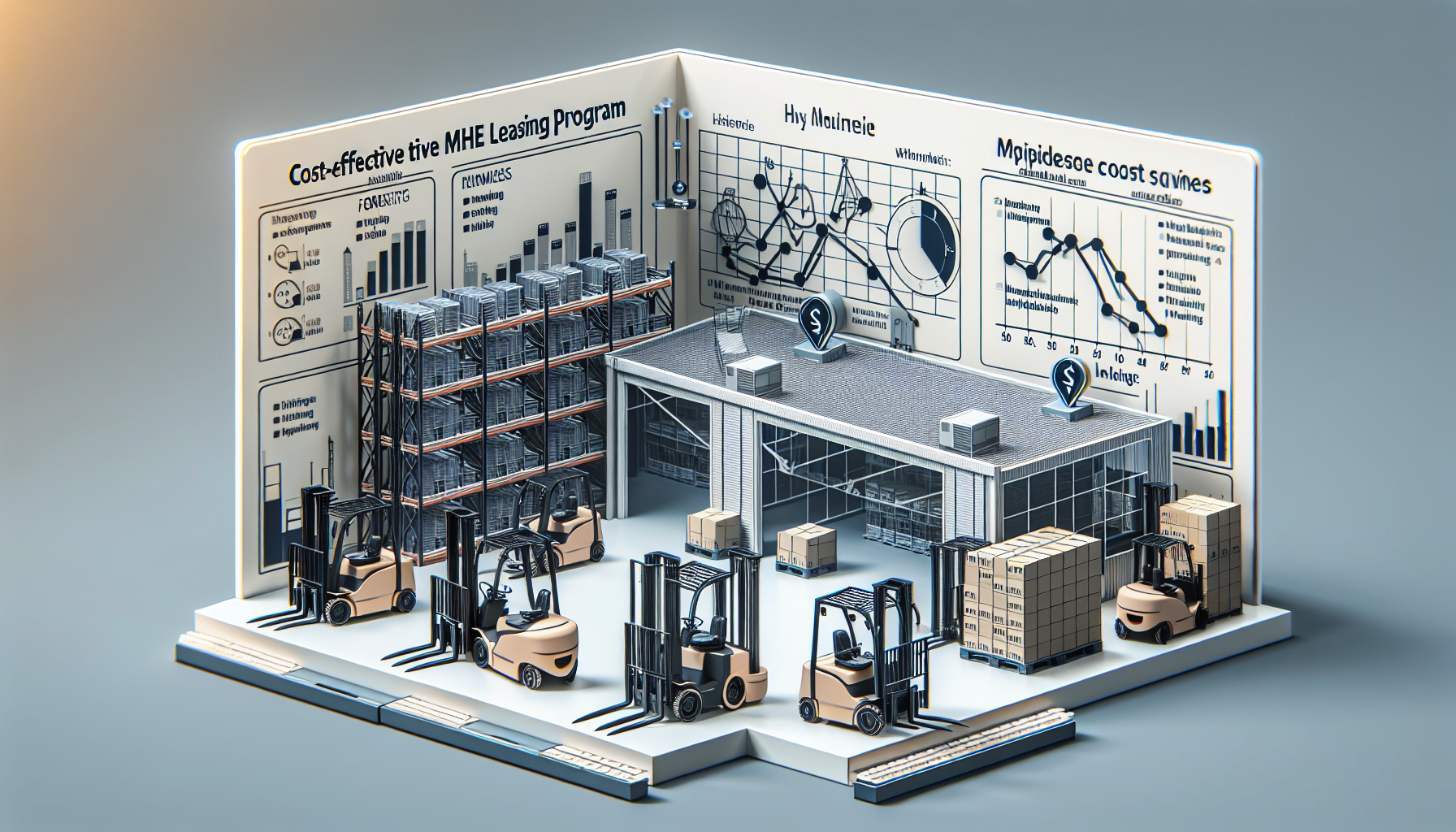In today’s fast-paced and competitive business environment, warehouse efficiency is crucial for success. Warehouse operations need to be streamlined to ensure smooth movement of goods and timely delivery to customers. One key aspect of optimizing warehouse operations is the management of material handling equipment (MHE).
The Benefits of Implementing a Cost-Effective MHE Leasing Program
When it comes to MHE, many warehouse managers face the dilemma of whether to buy or lease equipment. While buying MHE may seem like the obvious choice, it is not always the most cost-effective option. Implementing a cost-effective MHE leasing program can provide several benefits for warehouse operations:
- Flexibility: Leasing allows for greater flexibility as businesses can choose from a wide range of equipment options depending on their specific requirements. Whether it’s forklifts, pallet jacks, or reach trucks, leasing enables warehouse managers to scale their MHE fleet according to their needs. This flexibility is especially beneficial for seasonal businesses or those experiencing growth or fluctuations in demand.
- Cost Savings: Leasing MHE can be a cost-effective alternative to purchasing equipment outright. By opting for a lease, businesses can avoid upfront capital expenditures and spread the cost of equipment over time. This helps improve cash flow and allows for better budgeting as monthly lease payments are easier to manage and predict compared to the depreciation and maintenance costs associated with owning MHE.
- Access to Latest Technology: Leasing MHE allows businesses to stay up-to-date with the latest advancements in technology without the hassle of constantly buying new equipment. Leasing companies often provide access to state-of-the-art equipment, ensuring that warehouses can benefit from the most efficient and advanced MHE available in the market. This can significantly enhance productivity and operational efficiency.
- Maintenance and Service: When leasing MHE, maintenance and service are typically included in the lease agreement. This means that warehouse managers can rely on the leasing provider to handle regular servicing, repairs, and maintenance of the equipment. This saves time and resources as the burden of equipment maintenance is transferred to the leasing company, allowing warehouse staff to focus on core operations.
- Scalability: As businesses grow and evolve, their MHE needs may change. By leasing equipment, warehouse managers have the flexibility to upgrade or downsize their fleet as required. This scalability ensures that warehouses always have the right equipment to meet their operational demands, without having to worry about selling or disposing of outdated or excess equipment.
Implementing a cost-effective MHE leasing program requires careful planning and consideration. Here are some key steps to follow:
- Assess your MHE needs: Begin by assessing your warehouse’s specific MHE requirements. Consider factors such as the type and quantity of equipment needed, as well as any specialized equipment required for specific tasks or processes within your operations.
- Research leasing providers: Look for reputable leasing providers that specialize in MHE leasing. Consider factors such as company reputation, experience, lease terms, and available equipment options. It’s also a good idea to read customer reviews and testimonials to get an idea of the provider’s track record and customer satisfaction.
- Compare lease options: Once you have shortlisted a few leasing providers, compare their lease options in terms of lease duration, monthly payments, maintenance and service inclusions, and any additional fees or charges. Be sure to understand the terms and conditions of the lease agreement before finalizing your decision.
- Negotiate terms: Don’t be afraid to negotiate the terms of the lease agreement. Discuss your specific requirements with the leasing provider and see if there is room for customization or adjustments to better suit your needs.
- Implement and monitor: Once you have chosen a leasing provider and signed the lease agreement, it’s time to implement the program. Make sure all relevant staff members are aware of the new leasing arrangement and any changes in procedures or protocols. Regularly monitor the performance of the leased equipment and provide feedback to the leasing provider if necessary.
By implementing a cost-effective MHE leasing program, warehouse managers can optimize their operations while minimizing costs and maximizing efficiency. To learn more about MHE management and optimization solutions, visit HCO Innovations, a prominent provider of warehouse optimization solutions offering a range of innovative services to enhance safety, productivity, and efficiency within warehouse operations.

